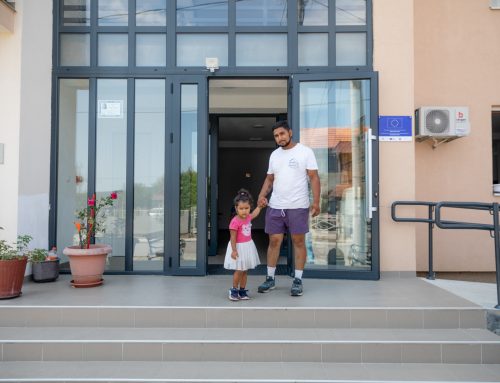Photo: FoNet
The final conference within the Project “Rural Development – Effective Land Management” concluded that the it was launched three years ago and funded by the EU, German and Serbian governments with EUR3.88 million, and has set up general conditions for effective land management in Serbia. The meeting concluded that the EU invested EUR2.78 million out of IPA funds, whereas German and Serbian governments allocated EUR100,000. The Project has been implemented by German Society for International Cooperation.
The project engaged experts from Germany, Austria, Hungary, Lithuania, Poland, Portugal and Slovenia, whereas study visits have been organised to EU Member States in search of the best solutions for Serbia.
Representative of EU Delegation to Serbia Carl Heinz Vogel said that the method of commassation built on experiences of EU countries in order to gain larger land units.
The Project also dealt with commassation, that is augmentation of land, because it turned out that this was a huge issue of Serbian agriculture. Seven pilot projects of commassation have been carried out in South and East Serbia, whereas a total area for commassation amounted to over 5,000 hectares.
Project Leader at GIZ Benjamin Klinger said that key problems were inefficient management of agricultural land, largely fragmented, as well as lack of utilisation and legal regulation.
The project tackled the management of state-owned land and produced information system which would allow for more efficient and transparent procedures, especially in the area of renting the state-owned land.
State Secretary at the Ministry of Agriculture Danilo Golubovic said that they had knew from the start that they would be facing a series of problems, but relevant authorities foresaw all the shortcomings and what had to be changed.
“The implementation of the project paved the way for the new possibilities and created mechanisms to improve living and working conditions of farmers in the least developed parts of Serbia, but we have also managed to improve the management of state-owned land, thus providing the existing and potential leaseholders with a more clear and transparent manner in which they would lease the agricultural land,” he said.
Golubovic said that the Ministry had a great responsibility in creating land policy and aligning it with the EU in order to improve agricultural structure in Serbia, making it capable of handling the requirements of market economy.
The meeting said that at the end of the project, the average land unit was increased by 42%, in case of the smallest project, that is by over 200% in case of the biggest project. This will enable better and more productive agricultural production and allow farmers to increase their profits.
Main novelties of the commassation in Serbia are: more transparent assessment of land and environment impact assessment.
The Project also dealt with abandoned land and, as a result, at least 55 hectares of such land are now being used again.
The conference said that apart from the main beneficiary that is the Department of Agricultural Land Management of the Ministry of Agriculture and Environmental Protection, the Project also included other relevant institutions such as Republic Geodetic Authority and Standing Conference of Towns and Municipalities.



